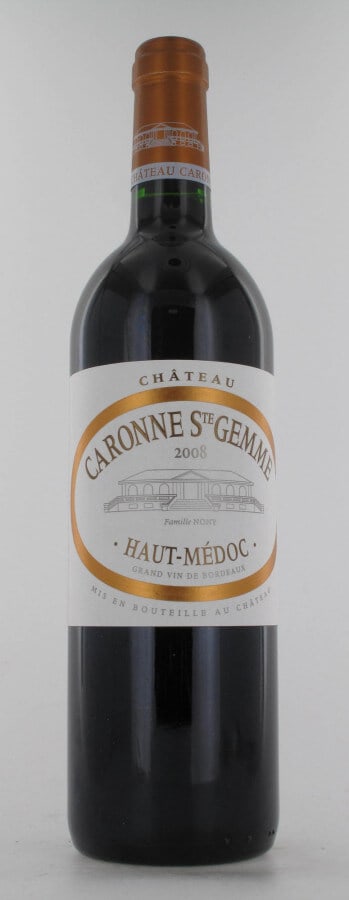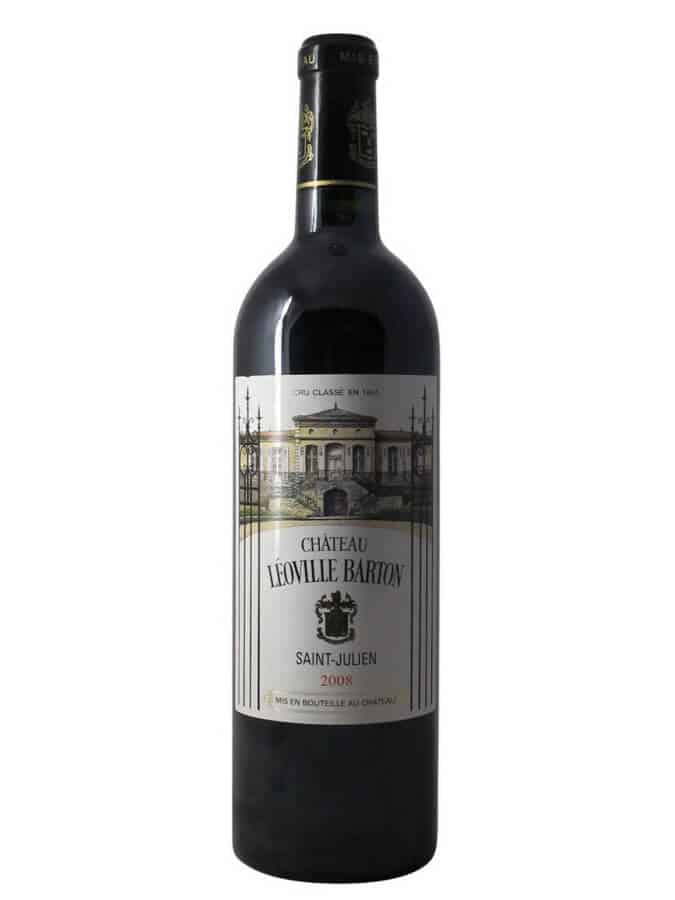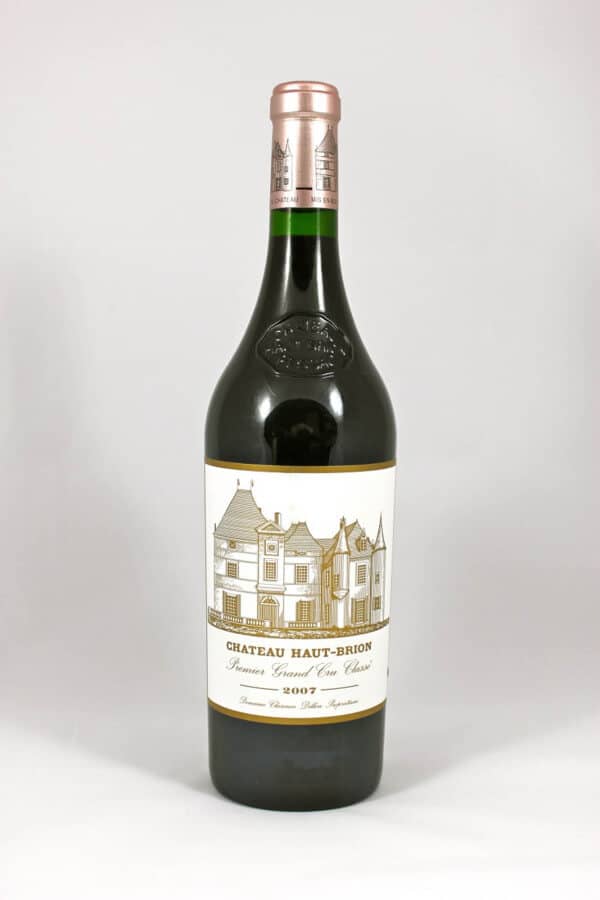Bordeaux wine is one of those often, mistakenly rated wines as it’s not a style, but a region. Many new wine drinkers falsely assume that a Bordeaux is an “elegant wine”.
Somehow, perversely, the region has managed to amass some type of reputation as being a style of wine as opposed to a region wine comes from. While there are certainly some remarkable wines from the region, simply because they’re from Bordeaux is not indicative of the wine being superlative in comparison to others.
One of the most common things I hear is when people say “That’s a merlot, not a Bordeaux”. The fact is that merlot is a style of wine, Bordeaux is not. Therefore, there are many styles of wine that come from the region with around 87% being red, followed by sweet and dry white wine and even some rosé and sparkling wine.
Don’t get me wrong, some of my favorite wines are from the Bordeaux region, but many of my least favorites are also from that same region.

Many might ask how the quality in wine from a single region can vary so dramatically. Just as you might find an exquisite wine in Napa Valley, there are also a few producers that make nothing more than cheap swill. Since Bordeaux is the largest wine region in France, there’s a total vineyard area of more than 120,000 hectares shared by 8500 châteaux (producers) and producing more than 700 million bottles of wine each year. It’s because of this incredible state of production that some wines are simply cheap and irrelevant, whereas others are, quite frankly, some of the best wine made around the world.
Since Bordeaux region wine is so widely misconstrued as being a varietal by such a large percentage of the wine-drinking population, we felt it was important to publish an article that provided some in-depth information on the the Bordeaux region with some recommendations as well. The one intrinsic benefit of Bordeaux wine is that regardless of differing tastes, virtually any wine drinker can find a bottle they’ll enjoy.

The History of the Region
Like many wine regions in France, the Bordeaux region received its first vines from the Romans in the first century as they embarked on the region and wanted to produce a wine for their own use. While most people in Britain refer to Bordeaux region reds as Claret, the wine initially received its global stamp of approval when Henry Plantagenet married Eleanor of Aquitaine. Since the wedding merged the Aquitaine Province with the Angevin Empire, it resulted in the immediate importation of Bordeaux wine into England. Since the Graves region was the primary producer of wine in Bordeaux, it resulted in claret being the wine most often exported into England. It’s for this reason, that many Brits still refer to all red Bordeaux region wine as claret. Although England oversaw much of the production at the time, by 1443, France regained control after exportation was halted due to the Hundred Years’ War. Today, it continues to be France that controls the majority share of all wine exported from Bordeaux. Really, the only exception is private exportation by wine producers owned from outside France. Still, it’s controlled and mandated by France and the EU.
Originally, the most common style produced in Bordeaux was Malbec wine, however, that changed in the early nineteenth century when Cabernet Sauvignon became the predominant varietal. Due to the rapid growth and fertile environment, the châteaux of Bordeaux received official classification in 1855. However, by the end of the century, most of the vineyards were completely infested by Phylloxera and were effectively ruined. In order to save the region, producers grafted the vines to rootstocks from the United States that were resistant to Phylloxera.

Bordeaux Region Climate
Like many regions in France, Bordeaux is special due to its fertile soil and climate. Since the foundation is primarily limestone, the soil is very heavy in calcium which results in an easily grown vine and thanks to the Garrone and Dordogne rivers, the region has a very oceanic climate which is ideal for vineyards.
There are numerous mini-regions within Bordeaux separated by what’s referred to as the left and right bank with the right bank located in the northern part of Bordeaux off the Dordogne river and the left in the southwest part of Bordeaux off the Garonne river. Each area is then subdivided into various sections, one of which is the well known and historic Graves. Despite this division of land, the entire region of Bordeaux shares similar soil composed of sandy stone, clay and gravel. The Garonne river is especially noted for its soil and most of the top rated châteaux are from that area.

Production of Bordeaux Region Wine
With the vast majority of the wine from the Bordeaux region being red, most of the wine is actually a blend of varietals rather than a single grape. Although, some châteaux will focus on a specific varietal like Merlot or Malbec, the standard is to use a selection that work harmoniously together. Despite, the region being an exemplary growing ground for many grapes, the only permitted grapes for red wine are Merlot, Malbec, Petit Verdot, Cabernet Sauvignon, Cabernet Franc and Carménère. Despite Carménère being a really exquisite varietal in many cases, unfortunately it’s a rarely used grape in the region only picked by a small section of producers. For the most part, it’s Cabernet Sauvignon that effectively dominates the region in use, specifically on the left bank in the large production area of Médoc. The most exemplary wines in the region are arguably what’s referred to as a Bordeaux Blend which consists of 70% Cabernet Sauvignon, 15% Merlot and 15% Cabernet Franc whereas the right bank is known for its blend of 70% Merlot, 15% Cabernet Sauvignon and 15% Cabernet Franc. Despite both banks being in the same region, they really try to separate themselves by focusing on separate styles of wine. Of course, with so many Châteaux in the region, there is little guarantee that every producer is going to adhere to those principles and since they compete, they often will try to alter or enhance their own product.
Following red wine, the next most common is white which is, for the most part, a Sauternes wine made from Sauvignon blanc, Muscadelle and Sémillon grapes and offers a sweet flavor profile. Following that composition, other grapes allowed for use in white wine include the Ugni blanc, Merlot blanc, Colombard, Mauzac, Ondenc and Sauvignon gris.
Following white, a very small percentage of the wine consists of sparkling wine and rose.
To learn more about the winemaking process, take a look at our Red wine and White wine guides.

Bordeaux Wine Styles
There are sixty appellations in Bordeaux and the wine across the whole of the region is generally divided into six families consisting of four reds and two whites.
Despite the region’s difference in quality from one winery to the other, Bordeaux is still well regarded as one of the best wine regions in the world, with other producers from around the globe constantly attempting to replicate the various styles that come from Bordeaux. Of course, this can be attributed simply to a numbers game due to the incredible amount of wine produced in the region. One can assume that even if half of the 700 million bottles produced are catastrophic failures, the other half consisting of exceptional wine would still outnumber much of the production from other regions around the world.
Red Bordeaux and Red Bordeaux Supérieur
These styles make up the vast majority of the red wine produced in the entire region, despite most of the producing châteaux being in the right bank.
Although, the wine is usually quite inky in color, due to the climate, it’s often less bold than one would expect. Despite its wetness – yes, that’s a thing – the ones are still quite complex and can be exceptionally elegant. They’re usually intended for consumption while still young, but can be aged for a period of time. They’re quite fruity and far less oaky than other styles in the region.

Red Libourne
Another style dominated by the Merlot grape, these wines are usually more concentrated with a very overt fruit flavor and lighter tannins making the wine a hit or miss in quality. If you’re looking for one of the better wines from this style, I recommend the ones from Saint-Émilion and Pomerol.
Red Côtes de Bordeaux
If you’re looking for a relatively inexpensive Bordeaux wine, this style is a good bet. The wine is made in eight appellations on the hills surrounding the region. Merlot heavy, the majority of the wines produced in this style are very intermediate table wines with their overall lack of complexity a direct reflection of the price per bottle.

Red Graves and Médoc
These are the more classic and refined styles of Bordeaux red made primarily with Cabernet Sauvignon and Merlot. For the most part, these wines requiring some cellaring before consumption and they are usually quite bold in comparison to other styles from the region. Personally, when I’m buying a wine from Bordeaux, it’s this style that I look for. That’s one benefit of Bordeaux wine is that if you’re not familiar with the exact bottle, looking at the style on the label can be an indicator of what to expect.
If you’re looking for a relatively inexpensive bottle from the region, Banville and Jones recently gave me a bottle of the 2010 Chateau Caronne Ste Gemme from Médoc. At around $30, you really can’t go wrong. It’s got a great thick mouthfeel with strong notes of ripe plums, blackberries and a strong finish of tobacco with a nice burst of cedar. It’s the tobacco mixed with the velvety tannins that really impressed me with this wine. Although, I drank it young, I would highly recommend letting it cellar for at least half a decade if not longer. It’s a 60% Cabernet Sauvignon, 37% Merlot and 3% Petit Verdot blend.
Dry and Sweet Whites
The dry whites from Bordeaux are often single varietal wines made of Sauvignon blanc, but are also sometimes a nice blend. This is one thing that is also often misconstrued, is novice wine drinkers assume all Bordeaux wines are red. It’s simply not true and there are still many white wines that come from the region. The best subdivision to look for when it comes to buying a dryer white is Graves. It’s also the only area with a classification for white wine. As far as sweeter white wines go, Sauternes is probably the best known for a quality white. The wine is usually a blend of Sauvignon blanc, Muscadelle and Sémillon. Other ones to consider when you can’t find a good Sauternes are Cadillac, Sainte Croix du Mont and Loupiac.
Recommended Bottles
When it comes to the best bottles from Bordeaux they get very expensive, even rivaling some of the most expensive Champagnes. If you’re a true connoisseur you can expect to invest at least a few hundred if not a thousand dollars in a single bottle of wine. However, just as there’s a wide range in quality, there’s also a wide range when it comes to prices.

Château Léoville Barton 2010
This exquisite wine is only about $150 but should easily cost more. As far as Bordeaux reds are concerned, it’s one of the most bold wines on the market. Consumed young, it’s a monster of a red with strong tannins and dark fruit flavors. I would however let it settle for a good while in the cellar to improve its complexity and let it smooth out just a bit.
Château Pontet-Canet 2009 Barrel Sample
Another really superb red, this barrel sample is rich and complex with concentrated velvety tannins and a nicely structured and lively flavor profile of dark ripe fruits and berries. The finish is long and dry.

Château Haut-Brion 2010
A really complex and intricate flavor profile is what makes this wine so wonderful. It has a really delicate elegance that can be confused as almost limp or wet but with proper cellaring, it’s easily one of the best wines from the region and becomes richer and more graceful with age. Despite its lack of firmness, it manages to offer such a vast range of flavors that it competes with almost every other wine I’ve tried from the region.
Learn to hold any wine glass!
Conclusion
Bordeaux wines are a region, not a varietal. They can be elegant and bright or fail miserably on the palate. The best suggestion I can offer is to try as many as you can as there are still far more high quality wines from Bordeaux than from most of the other regions around the world. Don’t let the inferior ones fool you into thinking that all are the same. It’s a numbers game when it comes to Bordeaux and you have to assume that of the millions of bottles produced, there are going to be some great ones and a few bad apples as well. What’s your favorite wine from Bordeaux?

Sorry,
Really do you prefere bordeaux wine ?
Too easy as wine, in French there are many other wine fashionable areas
I’m a bit disappointed form you
Let me know
Thank you
Vittorio (from Italy)
Hello:
First of all, a little correction: you say in the text “The fact is that merlot is a style of wine, Bordeaux is not”. Well, I’ll never consider merlot as a style of wine but just as a variety of grape. Maybe some people could arrive to that conclusion after the film Sideways, but definetily not.
Regarding the great Bordeaux wines I consider it’s well worth a mention for the stars of the crown such as Château Lafite Rothschild, Petrus, Château Margaux or Château d’Yquem, that wines that us the mortals will never taste surely, but at least it’s not bad to know their existence.
Best regards.
You are correct in saying that Merlot is a grape but that therefore makes it a varietal. When it comes to red wine there are eight major types (varietals, styles, etc…) which are named after the grapes. Merlot is one, there’s also Cabernet Sauvignon, Syrah, Malbec, Zinfandel, Sangiovese, Barbera and Pinot Noir. Of course, there are more, especially when you take into consideration various blends. However, Merlot is a type of wine and I used the word ‘style’ as a synonym for it. I’ve never seen the film Sideways. Is it good?
Dear Mr Shapira:
Maybe in Europe and in the States the way to consider wines are slightly different. Here in Spain our main grape for red wines is the tempranillo, besides a lot of other grapes and, of course, producers use too Cabernet Sauvignon (that we call joking “fix-it-all”, due to its ability to add a good flavour and taste to low quality wines), Merlot, Syrah, etc.
Years ago, when studying in France I heard people refer to wines according to its origin: Bourdeaux, Bourgogne, Côtes du Rhône, etc, and after comes the explanation ·”this is a Cabernet Sauvignon with a percentage of…”. In Spain we do the same. I don’t know about Italy.
Best regards
Wine is so complex … thanks for the rundown on Bordeaux wine gents!